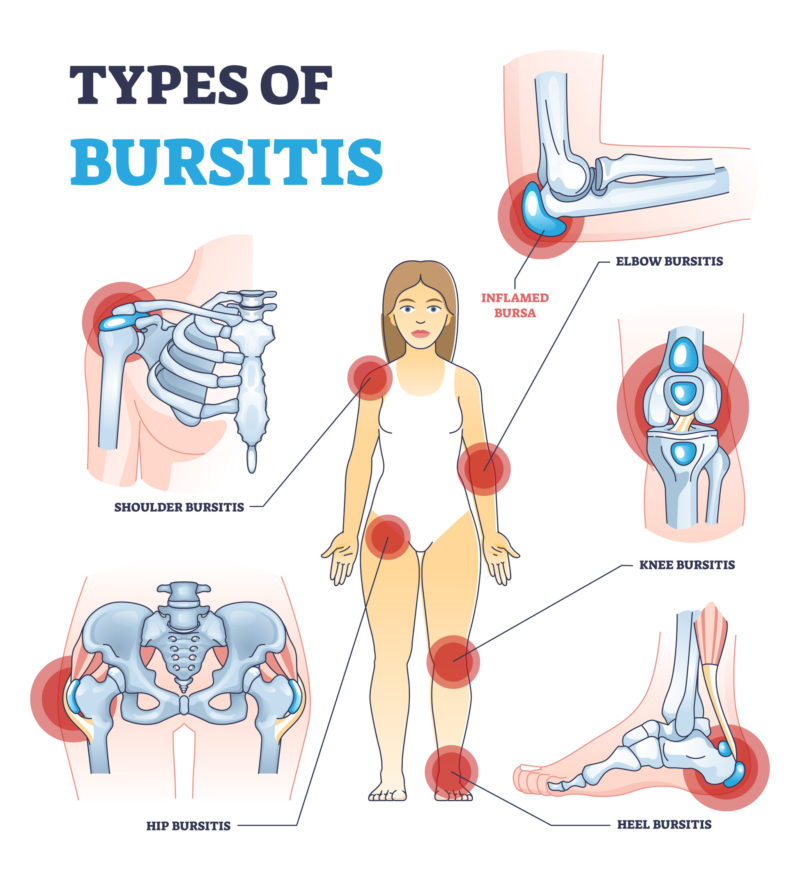
Ever wonder why runners say running is the best thing? These are just a collection of reason what you will gain from running. Many of us know that running is good for us, it helps build up your stamina, builds a stronger heart and helps to burn calories. Many of us also know, it’s not easy.
In an perfect runner’s world, every step of every mile would be 100 percent pain-free. No aches, no twinges, no lingering soreness from yesterday’s workout. The reality is that many runners constantly deal with a slight disturbance and injuries.
The most common injuries you can read below:

Patellofemoral pain syndrome (PFPS), or “runner’s knee,” is the irritation of the cartilage on the underside of the patella (kneecap). About 40 percent of running injuries are knee injuries. And 13 percent of runners suffered knee pain in the past year, according to 4,500 respondents to a runnersworld.com poll. PFPS typically flares up during or after long runs, after extended periods of sitting, or while descending hills and stairs.
Treatment: Use the PRICE principals as initial treatment for the pain and inflammation (Initial phase)
Improve quads strength and tendon strenght (yes, eccentric exercises) during the middle phase + stretching.

Achilles Tendonitis
The Achilles tendon connects the two major calf muscles to the back of the heel. Under too much stress, the tendon tightens and becomes irritated (tendinitis). It makes up 11 percent of all running injuries; eight percent of runnersworld.com poll respondents dealt with it this past year.
Treatment: Use the PRICE principals as initial treatment for the pain and inflammation (Initial phase)
Stretching the calves + improve calves strength and tendon strenght (yes, eccentric exercises) during the middle phase.

Hamstring injuries
The muscles that run down the back of our thighs bend our knees, extend our legs, drive us up hills, and power finish-line kicks. So when our hamstrings are too tight or weak to perform well, we notice it. Seven percent of poll respondents say their hamstrings have bugged them this past year.
Treatment: Use the PRICE principals as initial treatment for the pain and inflammation (Initial phase)
Stretching the hamstring + improve hamstring strength (concentric and eccentric exercises) during the middle phase.

Plantar Fasciitis
It’s not shocking that about 15 percent of all running injuries strike the foot—with each step, our feet absorb a force several times our body weight. Plantar fasciitis, small tears or inflammation of the tendons and ligaments that run from your heel to your toes, is usually the top foot complaint among runners—10 percent of runnersworld.com poll respondents struggled with it this past year. The pain, which typically feels like a dull ache or bruise along your arch or on the bottom of your heel, is usually worse first thing in the morning.
Treatment: Use the PRICE principals as initial treatment for the pain and inflammation (Initial phase).
Foot wear assessment and foot assessment are advised.
Physiotherapy will be advised and different techniques can be used to reduce and prevent pain.

Medial tibial stress syndrome (Shinsplints)
“Shinsplints” refers to medial tibial stress syndrome, an achy pain that results when small tears occur in the muscles around your tibia (shin bone). This makes up about 15 percent of running injuries; 10 percent of runnersworld.com respondents poll had shinsplints in the past year.
Treatment: Use the PRICE principals as initial treatment for the pain and inflammation (Initial phase).
Massage and STR can help.
Foot wear assessment and foot assessment are advised.
Increase distances gradually.
Improving your running technique.

 Iliotibial Band Syndrome (ITBS)
Iliotibial Band Syndrome (ITBS)
The iliotibial (IT) band lies along the outside of the thigh from the hip to the knee. When you run, your knee flexes and extends, which causes the IT band to rub on the side of the femur. This can cause irritation if you take up your mileage too quickly, especially if you’re doing a lot of track work or downhill running. ITBS makes up 12 percent of all running injuries; 14 percent of poll respondents experienced this in the past year.
Treatment: Use the PRICE principals as initial treatment for the pain and inflammation (Initial phase).
Massage, STR , stretching and acupuncture will help to improve this problem.

Stress Fracture
Unlike an acute fracture that happens as the result of a slip or fall, stress fractures develop as a result of cumulative strain on the bone. Runners most often have stress fractures in their tibias (shin), metatarsals (feet), or calcaneus (heels). They are one of the most serious of all running injuries; almost six percent of poll respondents had one in the past year.
Treatment:
Intial phase: STOP. Pain builds up as you run. But it doesn’t just hurt when you run; just being on your feet is uncomfortable. With this injury, you are either in the red or in the green zone.
Next phase: Pain-free throughout a run and no lingering pain afterward, even when you’ve been on your feet all day.





 Iliotibial Band Syndrome (ITBS)
Iliotibial Band Syndrome (ITBS)

